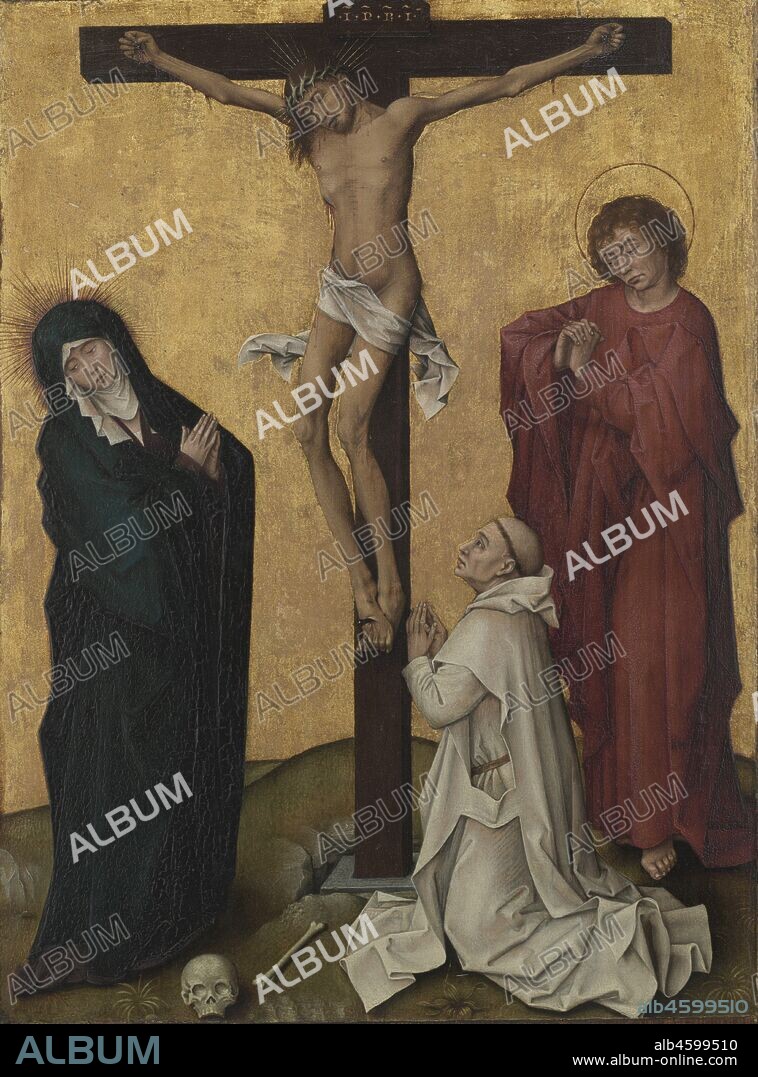alb4599510
The Crucifixion with a Carthusian Monk, c. 1460. Creator: Rogier van der Weyden (Flemish, c. 1399-1464), workshop of.

|
Add to another lightbox |
|
Add to another lightbox |



Title:
The Crucifixion with a Carthusian Monk, c. 1460. Creator: Rogier van der Weyden (Flemish, c. 1399-1464), workshop of.
Caption:
The Crucifixion with a Carthusian Monk, c. 1460. This painting shows a Carthusian monk kneeling in devotion and prayer before the Crucifixion. It is likely that this panel was intended for the cell of a monk in an unknown monastery. The Carthusians were particularly devoted to the Passion and Crucifixion of Christ, and devotional images were provided for each monk?s cell. The Carthusian order was founded by Saint Bruno in 1084 with the purpose of providing the strictest separation from the world. The first Carthusians were dedicated to contemplation through silence, prayer, poverty, penance, and almost continuous occupancy of a solitary cell. The solitary life could only be maintained through the establishment of separate cell houses. Each community of monks was limited to the apostolic number of 12, though exceptions were sometimes made. They were recognized by their white, full-length, cowled habit called the scapular, shown here. The artist has not been identified.
Personalities:
Credit:
Album / Heritage Art/Heritage Images
Releases:
Model: No - Property: No
Rights questions?
Rights questions?
Image size:
4070 x 5500 px | 64.0 MB
Print size:
34.5 x 46.6 cm | 13.6 x 18.3 in (300 dpi)
 Pinterest
Pinterest Twitter
Twitter Facebook
Facebook Copy link
Copy link Email
Email

